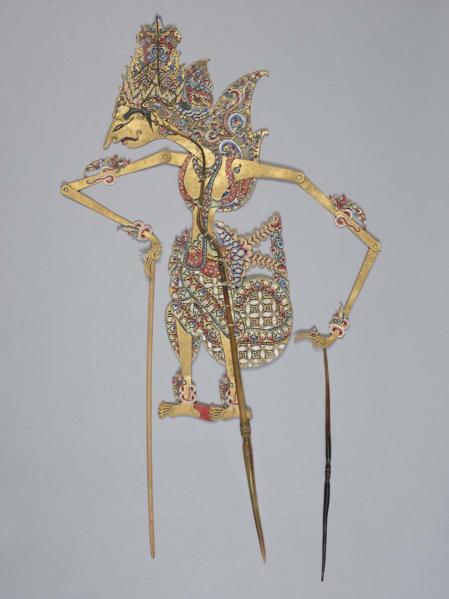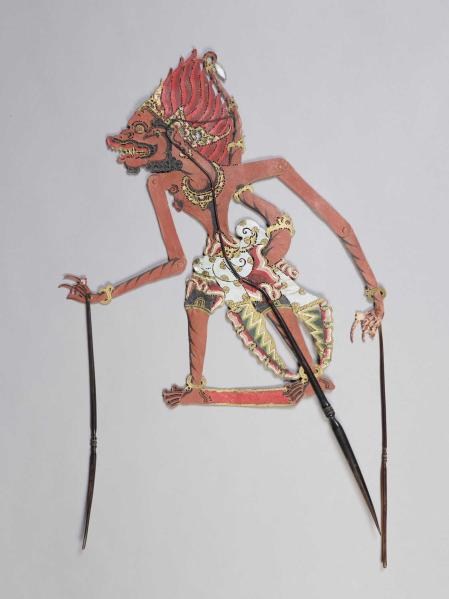Wayang Kulit – Javanese shadow puppet theatre
On show are four of the total of 120 shadow puppets preserved in the Folkwang Collection. The shadow-puppet plays visualize traditional Javanese art, with its marvellous refinement, aesthetic, and deep symbolism. In a Wayang kulit performance, the shadows (wayang) of the puppets made of leather (kulit), tell ancient stories about life and death. The exact origins of Wayang kulit, which is performed on the islands of Java and Bali in Indonesia as well as on a few other islands in Southeast Asia, are unknown. It is first mentioned in the Old Javanese poem Arjunawiwaha dating from the early 11th century. The poem teaches that everything perceived in life in an illusion – like the shadows in the Wayang kulit. Most of the sets of historical puppets known today date from the 19th or early 20th centuries.
The two main cycles that tend to be performed are the Ramayana and the Mahabharata. Both have their roots in Hindu-Buddhist culture and derive from Indian epics that became known in Java when Indian influence spread, starting from the first centuries of the Common Era. The performance of an original shadow-puppet play started in the evening and lasted until the early morning of the following day. A linen screen was stretched above a banana tree trunk laid horizontally; the stick at the bottom of the figures that are playing can be stuck into the trunk, with the “Evil” on the right and the “Noble Ones” on the left (from the viewpoint of the audience sitting in front of the canvas). The puppeteer (the dalang) sits behind the screen with a wooden box next to him containing some 50 puppets that will have parts in the course of the play. Behind the puppeteer sits the gamelan orchestra, consisting of metallophones, gongs, and other instruments. The light from an oil lamp (the blencong) suspended behind the screen (usually replaced today by electric lights) casts the eponymous shadows onto the screen.
In earlier times, the Wayang was performed in the context of rituals that promised good fortune, e.g., on the occasion of the birth of a child, a wedding, or when consecrating a house. Manufacturing a Wayang kulit set was an expensive matter, as was therefore owning one. For that reason, traditionally only families of a higher ranking were able to afford to host Wayang performances. Given these costs and also because of the decline in traditional cultural practices, privately organized performances had slumped by the early noughties. Since then, there has been a change in the public mindset as regards its own rich culture. One key contributing factor was the inclusion of Wayang kulit shadow puppet theatre in the UNESCO Representative List of the Intangible Cultural Heritage of Humanity in 2008.
Share on


